At NW Regen we are deeply committed to your well-being. We understand the emotional toll that hair loss can take on one’s self-esteem and overall sense of confidence. Our holistic approach encompasses tailored biocellular treatments, paired with nutrition and hormonal balance, depending on your biology.
The journey towards healthier, fuller hair is often multifaceted, involving a combination of medical, nutritional, and lifestyle interventions.
In this blog, we’ll explore:
- Forms of hair loss,
- Hormonal influences,
- Targeted nutrients for optimal hair growth,
- Healthy habits for healthy hair growth,
- Pharmaceutical hair loss treatments, and
- Cutting-edge treatments, like Platelet-Rich Plasma (PRP) and Stem Cell Therapy.
We’ll also delve into the impact of lifestyle habits, such as stress management, adequate sleep, and an anti-inflammatory diet, on maintaining a vibrant head of hair.
Understanding four Forms of Hair Loss
Hair loss can manifest in different forms, each with its own set of causes and characteristics. Common types include:
Androgenetic Alopecia (AGA)
The most common form of hair loss is hereditary. Known colloquially as male- or female-pattern baldness, AGA leads to a gradual reduction in hair volume and thickness.
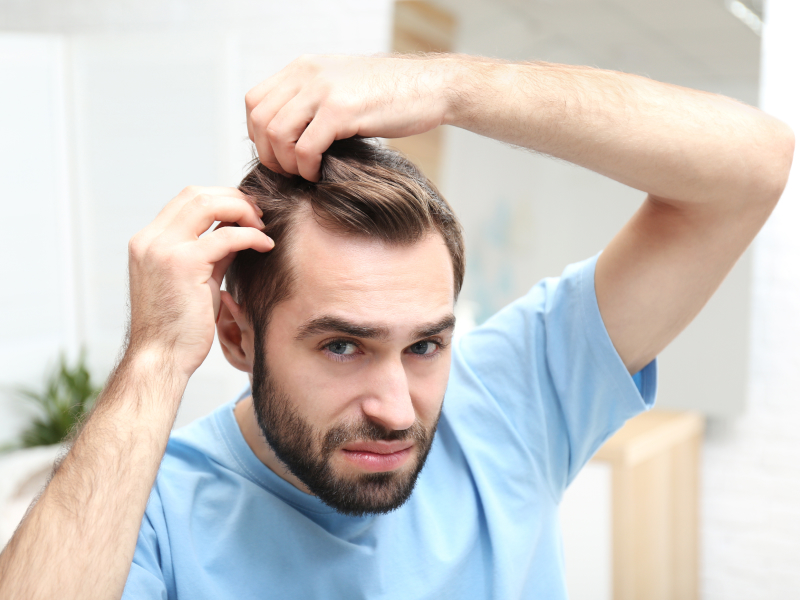
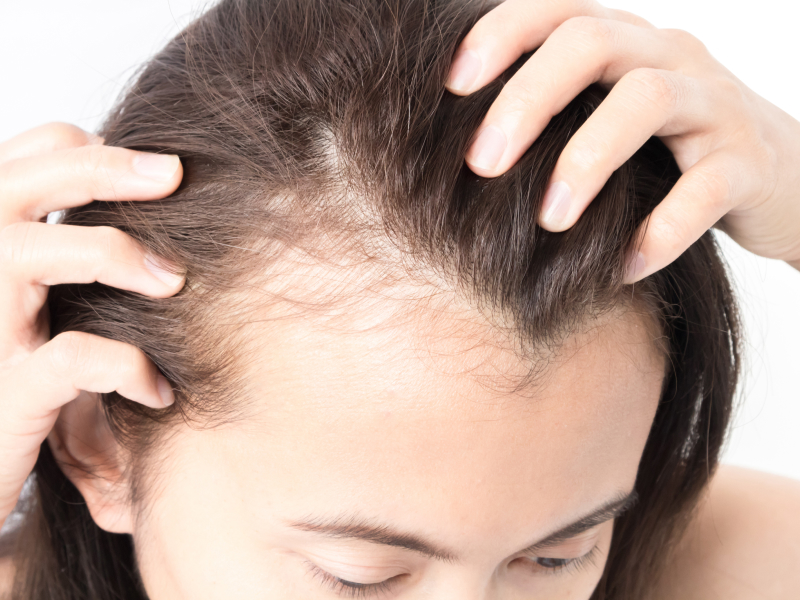
Causes: Genetic predisposition plays a significant role in AGA, coupled with the influence of hormones – particularly, dihydrotestosterone (DHT).
Alopecia Areata
An autoimmune disorder, this condition causes the immune system to mistakenly attack hair follicles, resulting in patchy hair loss. Hair loss can be sudden and may progress to total baldness (Alopecia Totalis) or loss of all body hair (Alopecia Universalis).
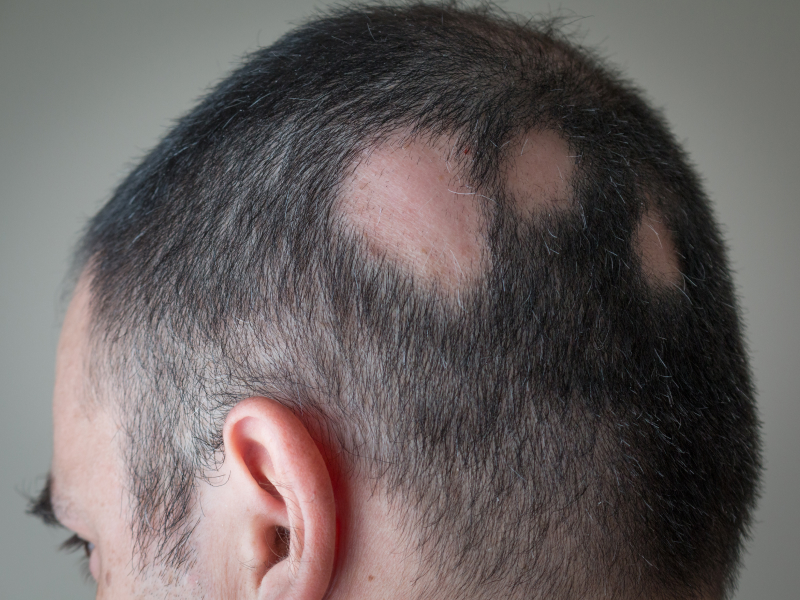
Causes: Autoimmune conditions often contribute, with genetic factors playing a role.
Cicatricial Alopecia
When scarring on the scalp accompanies hair loss, this could be caused by a form of alopecia known as ‘scarring alopecia’ or Cicatricial Alopecia, involving the destruction of hair follicles and the replacement with scar tissue. Once scarring occurs, it is often irreversible.
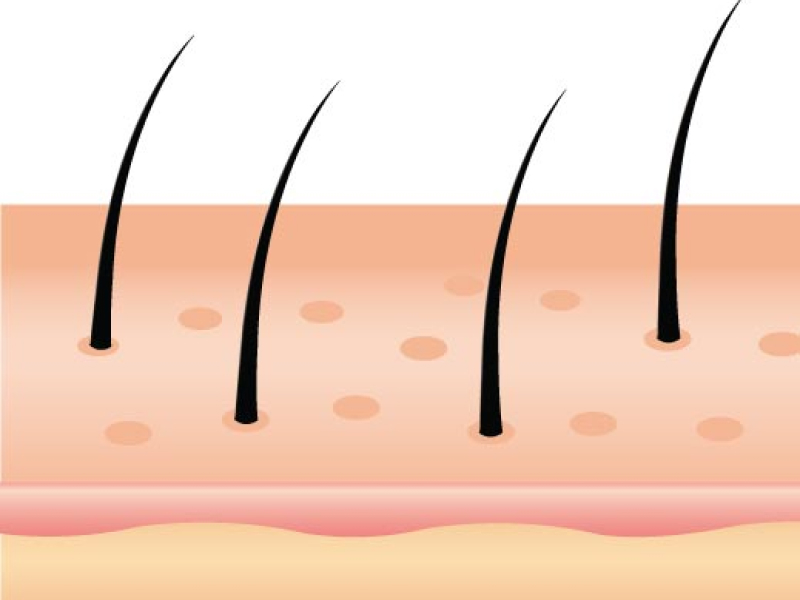
Causes: Inflammatory conditions, infections, or physical trauma.
Telogen Effluvium
Characterized by a sudden increase in hair shedding, due to a higher proportion of hair follicles prematurely entering the resting (telogen) phase.
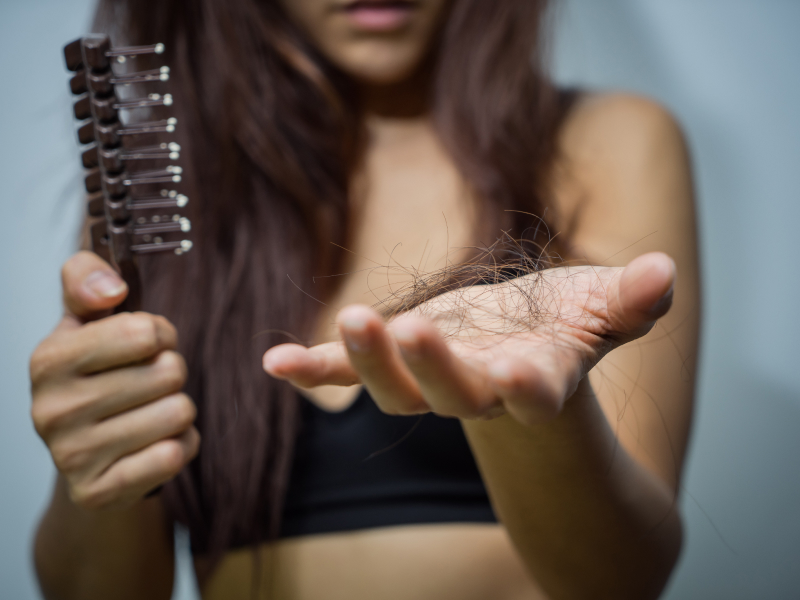
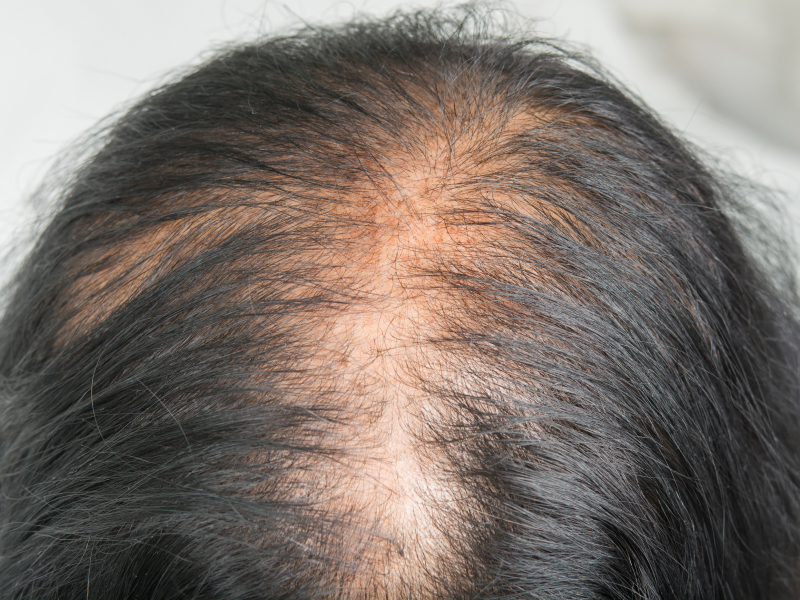
Causes: Severe stress, illness, surgery, or triggering hormonal changes.
Hormonal Causes of Hair Loss
Hormones play a pivotal role in hair growth and hair loss.
Dihydrotestosterone (DHT)
DHT is a very bioactive form of testosterone. A lot of people think of it as the ‘bad guy’ because it’s largely responsible for baldness due to AGA, the most prevalent type of hair loss. However, DHT is also responsible for testosterone’s many physiological benefits, including sexual function.
Thyroid imbalances
Thyroid imbalances can also contribute to hair loss.
While suboptimal thyroid hormones can cause follicles to prematurely enter the shedding phase and have difficulty re-entering the growing phase, optimizing thyroid hormones can significantly improve hair quality over time.
- Thyroid hormones (T4 and T3) are involved in the transition between growth (anagen) and shedding (telogen) phases of the hair cycle.
- Hashimoto’s thyroiditis, an autoimmune hypothyroid condition, can cause significant hair thinning of both the scalp and eyebrows along with brittle hair and nails.
Nutrition for Healthy Hair Growth
What’s crucial for promoting hair health? A well-balanced diet rich in specific nutrients.
Include these essentials in your diet:

Protein
From lean meats, fish, eggs, and plant-based sources like legumes helps support healthy hair.

Iron
Essential for oxygen transport to hair follicles – found in spinach, lentils, and red meat.

Vitamin C
Supports your internal collagen production for hair growth.
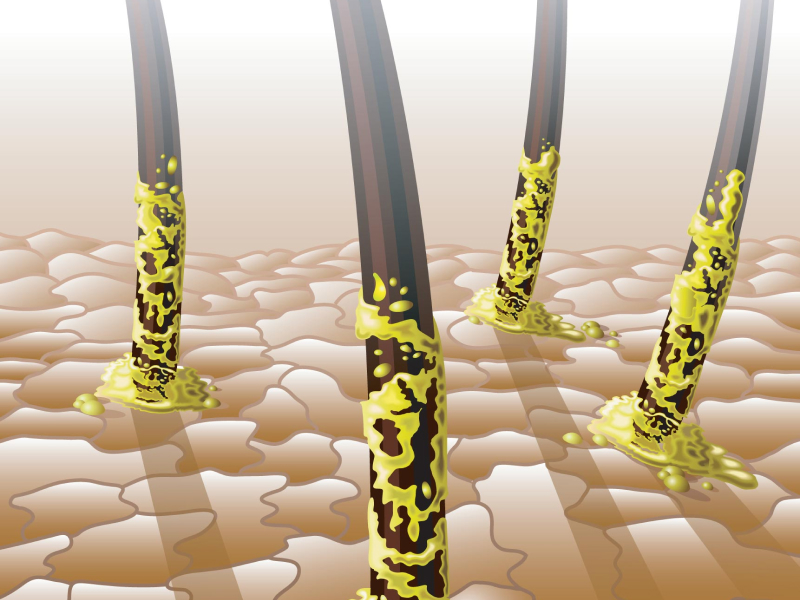
Vitamin A
Promotes production of sebum, an oily substance that conditions the scalp, and nourishes and protects the scalp and hair.*

Biotin (B7)
Deficiency can lead to hair loss. Correcting biotin deficiency may also help improve hair growth.

Omega-3 Fatty Acids
Nourish hair follicles, provide anti-inflammatory benefit, and can be obtained from fatty fish, chia seeds, and flaxseeds.
*Excellent sources of Vitamin A are carrots, sweet potatoes, and citrus fruits.
Healthy Habits for Healthy Hair
Beyond regenerative therapies and functional medicine interventions, there is something that has significant impact when it comes to hair growth and maintenance. What is it?
Healthy lifestyle habits! These are also important to implement when moving forward with either PRP or Stem Cell treatments – to do what you can to support optimal outcomes.

Stress Management
Incorporate stress-reducing practices like meditation, yoga, or deep breathing exercises into your routine, as chronic stress can contribute to hair loss.

Adequate Sleep
Aim for 7-9 hours of quality sleep each night to support overall health, mood regulation, energy levels, and healthy hair growth.

Anti-Inflammatory Diet
Embrace a diet rich in fruits, vegetables, whole grains, and lean proteins. Antioxidants in these foods combat inflammation, promoting a healthy scalp.
Are There Pharmaceutical Treatments for Hair Loss?
There are several pharmaceutical options available for hair loss. A summary follows of the most common medications used. Because genetic influences can determine how responsive someone will be to certain medications, it’s often useful to test for certain genetic markers before beginning any pharmaceutical treatment for hair loss.
Minoxidil (Rogaine)
- Oral Minoxidil: Originally developed as an anti-hypertensive medication, it’s been used for many years to treat hair loss.
- Topical Minoxidil: Applied directly to the scalp, it enhances blood flow and prolongs the anagen phase.

Finasteride (Propecia)
- Administered orally in tablet form, typically taken once daily. Effectively slows hair loss and promotes regrowth, particularly in androgenetic alopecia in men. Inhibits 5-alpha reductase, reducing the conversion of testosterone to dihydrotestosterone (DHT).
- Potential side effects include sexual dysfunction. There is also a risk of developing post-finasteride syndrome which includes severe, prolonged sexual and urogenital side effects. It’s VERY important to discuss risks and benefits with a knowledgeable healthcare provider before starting Finasteride.

Dutasteride (Avodart)
- Administered orally in tablet form, typically taken once daily. More potent than Finasteride, it inhibits both Type I and Type II forms of 5-alpha reductase. Shows promise where finasteride may be less effective, but its use for hair loss is considered off-label. Consultation with a healthcare professional is essential with this medication to assess suitability and monitor potential side effects.

What is Hair Restoration Therapy?
At NW Regen, we utilize non-surgical treatments for hair loss using orthobiologic therapies such as PRP and Micro-Fragmented Adipose Tissue (MFAT). We essentially take healthy cells from your blood (PRP) and fatty tissue (Adipose) that are rich in regenerative cells including stem cells and transplant them to your scalp.
Healthy cells found in orthobiologic injections have been shown in research to stimulate the growth of new cells, help stem cells migrate to the area, and promote the formation of new hair follicles. They also prolong the life of existing hair follicles. We essentially encourage your natural hair to regrow!
Platelet rich plasma (PRP)
Platelet rich plasma (PRP) therapy is a non-surgical option for restoring hair growth for those dealing with premature hair loss, such as Androgenic Alopecia (AGA) or Alopecia Areata.
Using your own body to help heal your scalp and generate hair growth, PRP is an advanced form of noninvasive, regenerative injection therapy. A series of injections utilize the growth factors and proteins found in the platelets of blood drawn directly from you in our lab.
To restore hair growth, thickness, and quality, PRP promotes blood supply to the scalp, regulates inflammation, and induces new cellular growth at the level of the hair follicle.
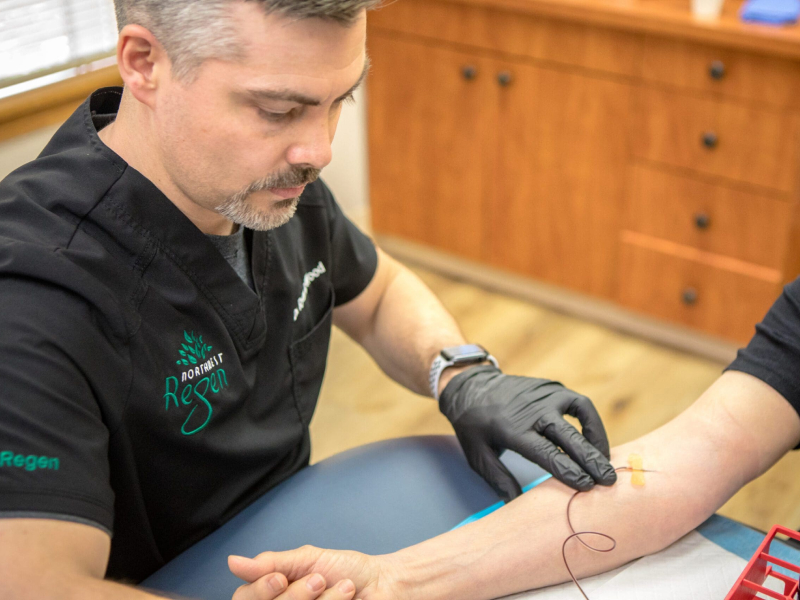
Micro-Fragmented Adipose Tissue (MFA)
Micro-Fragmented Adipose Tissue (MFAT) is a powerful injection therapy that use an adipose (fatty) tissue graft from your body rich in regenerative cells including stem cells. These cells can help to repair degenerative conditions in ligaments, tendons, muscles, skin, and hair. They also improve sexual health.
Adipose tissue is fat tissue that contains multiple types of healthy cells. It’s an optimal biocellular material because it offers cellular, biological and structural support for injection therapies, creates tissue scaffolding to support repair, is simple to harvest, and contains about 1,000 times as many stem cells as bone marrow.
The healthy cells from the fatty tissue initiate repair of the damaged cells and provide the cellular matrices needed to repair and restore tissues. This helps your own body to orchestrate a powerful regenerative healing process.
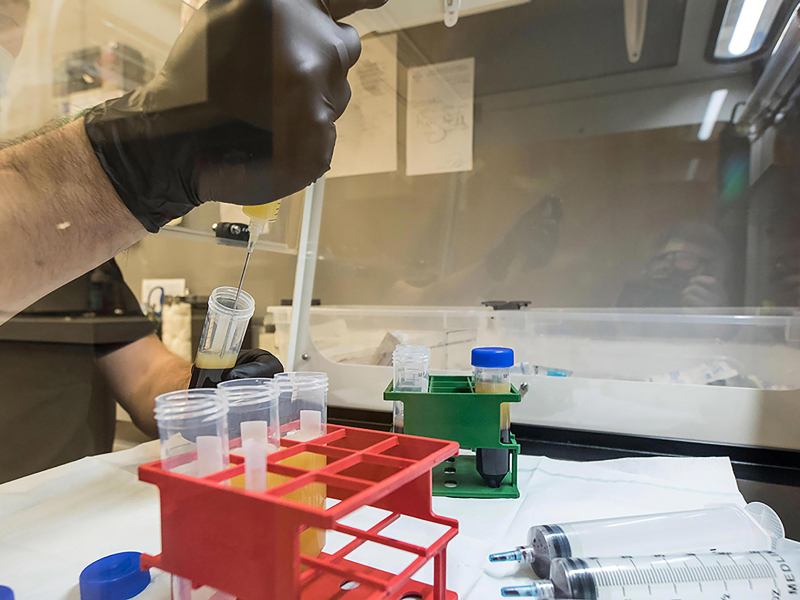
Why Wait? Regenerate!
At NW Regen, we’ve got you covered. Your journey to healthy, vibrant hair starts with our holistic approach to hair health—with nutrition, hormonal balance, and hair restoration injection therapy that restores natural hair growth for both men and women.
Contact us for a comprehensive functional medicine workup to determine the underlying cause of your hair loss.
We’ll see if regenerative PRP hair restoration therapy is in the cards for you.
NW Regen
We offer regenerative and interventional medicine – tailored to empower you with a more vibrant, active lifestyle.


